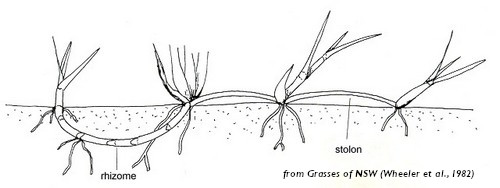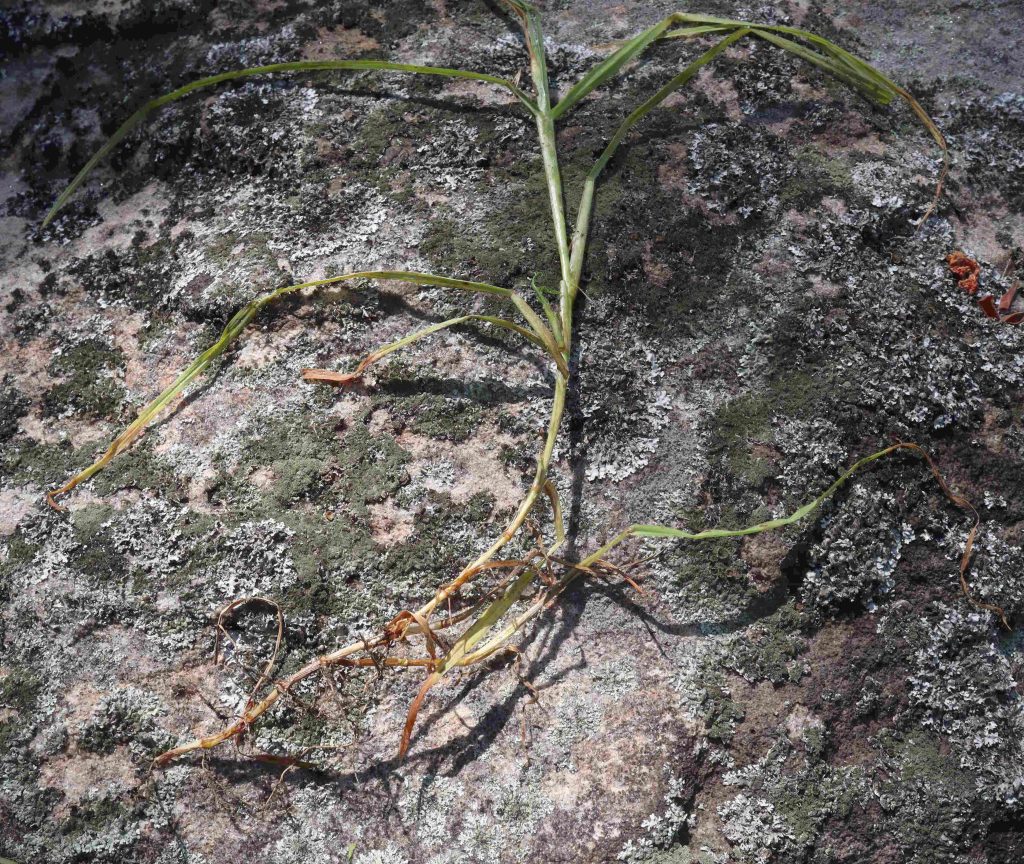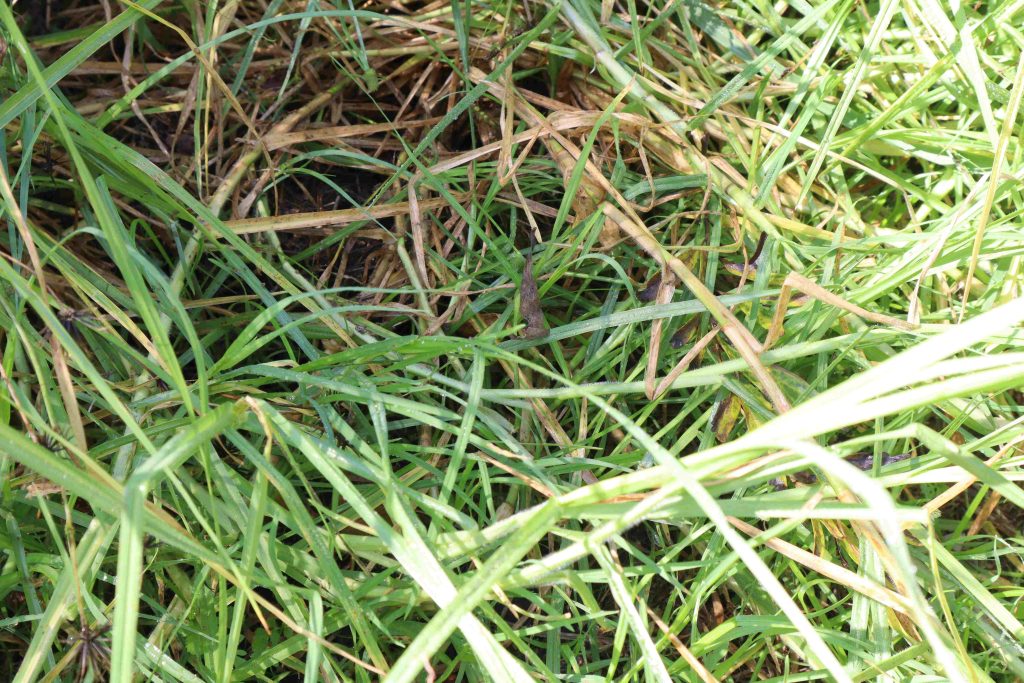The Mudcrabs currently work on 15 sites along the Cooks River. Many of these are bush regeneration sites. Regeneration usually involves 3 primary activities for our volunteers. Depending on the site these are:
Landscaping – terracing and major site preparation (includes habitat/critter piles)
Planting native species – selection and timing are important
Weeding – an on-going process that encourages site regeneration
Weeding is the primary activity that The Mudcrabs volunteers are involved with. It is through targeted weeding that we allow space for the native plantings and remnant natives species to re-establish and develop an ecosystem that reflects the original state of the bushland that was the Cooks River Valley. A number of sites have a weed pile that allows the weed material to compost and is a great way to recycle the weeds back into the site.
Identification of priority weeds and applying the right strategy will yield the best results. This webpage is designed to help new-comers to bush regeneration understand what we do on the various sites and how they can help. Gaining skills in weed identification is an important capability for our volunteers. Most of our bushcare activities start off with an identification of what weeds we will target for the session and what techniques we will employ to remove these weeds.
Our experienced botanists and bush regenerators have put together a list of the weeds that we target across our Cooks River sites. Being able to identify these weeds and understanding how to eliminate/manage them really helps in re-establishing healthy native zones that support and encourage the return of original ecosystems.
Note that we have a couple of native species in this list. In our area they can prove a pest if they end up in the wrong place.
Below is a table of the main weed targets. The ones we target in a session are determined by how numerous/obvious they are and how soon they are to throwing seed or replicating. Some weeds (annuals) have a short life-cycle (seed, grow, drop seeds, die) e.g. Ehrharta, others are are long-lived (perennial) and reproduce continuously e.g. Lovegrass,Trad.
In our weed table we have selected the top 67 weed species and have assigned a ‘Significance value’ to each one:
1 – means a focus weed that we remove whenever we encounter it
2 – means that we consider whether the infestation warrants the effort of removal
3 – means that the weed is relatively uncommon in the Cooks River Valley but worth removing when we encounter it.
| Common Name | Scientific Name | Significance |
| Turkey Rhubarb | Acetosa sagittata | 1 |
| Crofton Weed | Ageratina adenophora | 1 |
| Madeira Vine | Anredera cordifolia | 1 |
| Moth Vine | Araujia sericiflora | 1 |
| Balloon Vine | Cardiospermum grandiflora | 1 |
| Celtis | Celtis australis | 1 |
| Green Cestrum | Cestrum parqui | 1 |
| Camphor Laurel | Cinnamomum camphora | 1 |
| African/Weeping Love-grass | Eragrostis curvula | 1 |
| Seaside Daisy | Erigeron karvinskianus | 1 |
| Cockspur Coral Tree | Erythrina crista-galli | 1 |
| Coral Tree | Erythrina X sykesii | 1 |
| Yellow Ginger Lily | Fiedychium gardnerianum | 1 |
| Honey Locust | Gleditsia triacanthos | 1 |
| English Ivy | Hedera helix | 1 |
| Kurnell Curse/Pennywort | Hydrocotyle bonariensis | 1 |
| Coastal Morning Glory | Ipomoea cairica | 1 |
| Blue Morning Glory | Ipomoea indica | 1 |
| Lantana | Lantana camara | 1 |
| Large-leaved Privet | Ligustrum lucidum | 1 |
| Small-leaved Privet | Ligustrum sinense | 1 |
| Honeysuckle | Lonicera japonica | 1 |
| Primrose Willow | Ludwigia peruviana | 1 |
| Mickey Mouse Plant | Ochna serrulata | 1 |
| African Olive | Olea europaea ssp. africana | 1 |
| Asthma Weed | Parietaria judaica | 1 |
| Kikuyu | Pennisetum clandestinum | 1 |
| African Fountain grass | Pennisetum setaceum | 1 |
| Asparagus Fern | Protasparagus aethiopicus | 1 |
| Blackberry | Rubus fruticosus spp. | 1 |
| Chinese Tallow | Sapium sebiferum | 1 |
| Cassia | Senna pendula var. glabrata | 1 |
| Paddy’s Lucerne | Sida rhombifolia | 1 |
| Potato Vine | Solanum jasminoides | 1 |
| Rhus | Toxicodendron succadenaneum | 1 |
| Trad | Tradescantia albiflora | 1 |
| Golden Wreath Wattle | Acacia saligna | 2 |
| Box Elder | Acer negundo | 2 |
| Giant Reed | Arundo donax | 2 |
| Carpet Grass | Axonopus affinis | 2 |
| Common Couch | Cynodon dactylon | 2 |
| Panic Veldtgrass | Ehrharta erecta | 2 |
| Lemon-scented Gum | Eucalyptus citriodora | 2 |
| Fishbone Fern | Nephrolepis cordifolia | 2 |
| Climbing Asparagus | Protasparagus plumosus | 2 |
| Black-berry Nightshade | Solanum nigrum | 2 |
| Sow Thistle | Sonchus oleraceus | 2 |
| Buffalo Grass | Stenotaphrum secundatum | 2 |
| Mist-flower | Ageratina riparia | 3 |
| Tree of Heaven | Ailanthus altissima | 3 |
| Whisky Grass | Andropogon virginicus | 3 |
| Mother-of-millions | Bryophyllum delagoense | 3 |
| Live Plant | Bryophyllum pinnatum | 3 |
| Cabomba, Fanwort | Cabomba caroliniana | 3 |
| Flick Weed | Cardamine hirsuta | 3 |
| Ribbon Plant, Spider Plant | Chlorophytum comosum | 3 |
| Pampas Grass | Cortaderia selloana | 3 |
| Cape Ivy | Delairea odorata | 3 |
| Silky Oak | Grevillea robusta | 3 |
| Jasmine | Jasminum polyanthum | 3 |
| Baby Smilax | Myrsiphyllum asparagoides | 3 |
| Japanese Knotweed | Persicaria capitata | 3 |
| Canary Island Palm | Phoenix canariensis | 3 |
| Lippia, Carpet Weed | Phyla nodiflora | 3 |
| Polygala | Polygala myrtifolia | 3 |
| Black Locust | Robinia pseudoacacia | 3 |
| Blue Periwinkle | Vinca major | 3 |
Weeds & Removal Strategy
Most of these weeds can largely be managed via hand weeding. We try to get to them before they throw seed. As many are annuals, we can interrupt the seeding cycle and significantly reduce their impact and give the native plants an advantage. The technique used is species specific so identification is crucial.
Kikuyu is a particularly challenging weed along the river as it is very vigorous and spreads quickly in optimal conditions by underground stems (rhizomes) and over other plants via its robust aboveground stems (solons). This persistent weed species continues to be the main focus at many of our Mudcrabs sites along the Cooks River. The primary technique is to trace the aboveground stolons back to the crown and remove them. The underground rhizomes can be “chased” using a knife or your preferred weeding tool and pulled out. For larger, dense infestations we rob the weed of sunlight (solarisation) by cardboard and mulch. The cardboard decomposes in a few months and we can infill with native plants.
Below are pictures of Kikuyu from the 18th Tee Mudcrabs site. We have used ‘solarisation’ on larger areas (cardboard and mulch) and hand weeding to remove it. When we encounter Kikuyu we expect to have multiple sessions to get it under control.

Understanding how weeds spread guides us in adopting the appropriate management strategy. Since Kikuyu spreads from both above ground and below ground stems we need to remove these.




Weeding References
Native and Weed Look A-likes – Hornsby Council
Common Riverbank Weeds – Greater Sydney
Sydney Weeds Network
Bushland Weeds of Sydney – AABR
